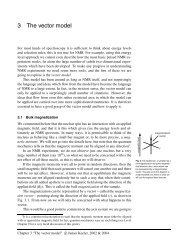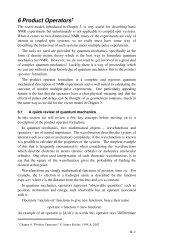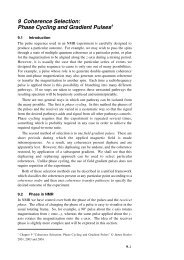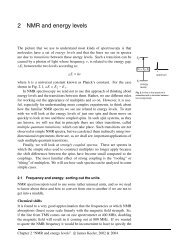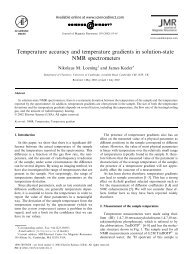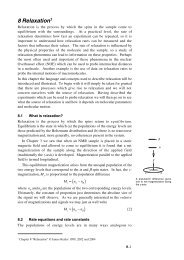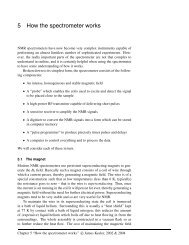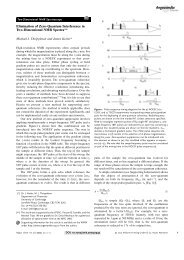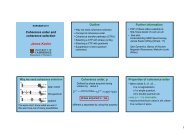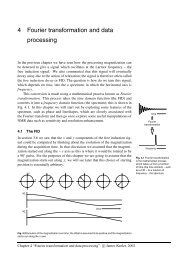Phase Cycling and Gradient Pulses - The James Keeler Group
Phase Cycling and Gradient Pulses - The James Keeler Group
Phase Cycling and Gradient Pulses - The James Keeler Group
Create successful ePaper yourself
Turn your PDF publications into a flip-book with our unique Google optimized e-Paper software.
discrimination in the F 1<br />
dimension is achieved by the SHR or TPPI procedures.<br />
Multiple quantum filters through higher orders can be implemented in the same<br />
manner.<br />
In sequence (b) the final spin echo is not required as data acquisition is<br />
started immediately after the final radiofrequency pulse; phase errors which<br />
would accumulate during the second gradient pulse are thus avoided. Of<br />
course, the signal only rephases towards the end of the final gradient, so there is<br />
little signal to be observed. However, the crucial point is that, as the<br />
magnetization is all in antiphase at the start of t 2<br />
, the signal grows from zero at<br />
a rate determined by the size the couplings on the spectrum. Provided that the<br />
gradient pulse is much shorter that 1/J, where J is a typical proton-proton<br />
coupling constant, the part of the signal missed during the gradient pulse is not<br />
significant <strong>and</strong> the spectrum is not perturbed greatly. An alternative procedure<br />
is to start to acquire the data after the final gradient, <strong>and</strong> then to right shift the<br />
free induction decay, bringing in zeroes from the left, by a time equal to the<br />
duration of the gradient.<br />
9.6.7.3 HMQC<br />
I<br />
∆<br />
∆<br />
t 2<br />
S<br />
τ 1<br />
t 1<br />
τ 1<br />
g<br />
1<br />
p I 0<br />
–1<br />
1<br />
p S 0<br />
–1<br />
G 1 G 1 G 2<br />
<strong>The</strong>re are several ways of implementing gradient selection into the HMQC<br />
experiment, one of which, which leads to absorption mode spectra, is shown<br />
above. <strong>The</strong> centrally placed I spin 180° pulse results in no net dephasing of the<br />
I spin part of the heteronuclear multiple quantum coherence by the two<br />
gradients G 1<br />
i.e. the dephasing of the I spin coherence caused by the first is<br />
undone by the second. However, the S spin coherence experiences a net<br />
dephasing due to these two gradients <strong>and</strong> this coherence is subsequently<br />
refocused by G 2<br />
. Two 180° S spin pulses together with the delays τ 1 refocus<br />
shift evolution during the two gradients G 1<br />
. <strong>The</strong> centrally placed 180° I spin<br />
pulse refocuses chemical shift evolution of the I spins during the delays ∆ <strong>and</strong><br />
all of the gradient pulses (the last gradient is contained within the final delay,<br />
∆). <strong>The</strong> refocusing condition is<br />
m2γ<br />
G − γ G = 0<br />
s<br />
1 I 2<br />
where the + <strong>and</strong> – signs refer to the P- <strong>and</strong> N-type spectra respectively. <strong>The</strong><br />
switch between recording these two types of spectra is made simply by<br />
reversing the sense of G 2<br />
. <strong>The</strong> P- <strong>and</strong> N-type spectra are recorded separately<br />
9–45



